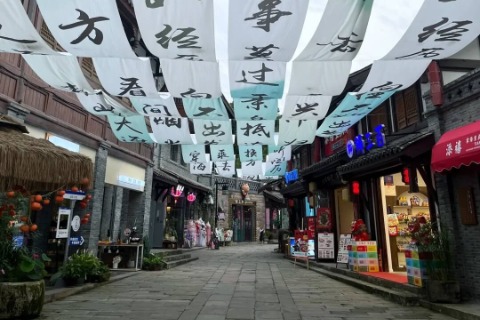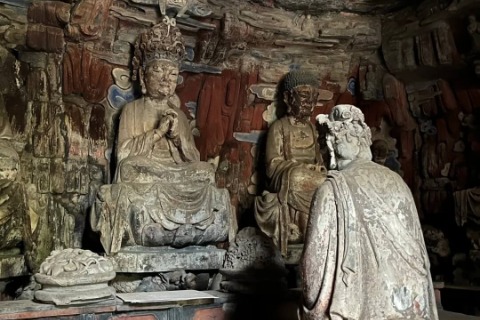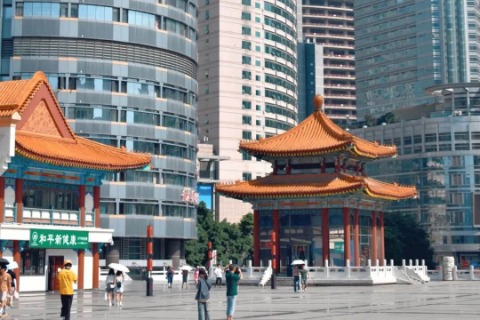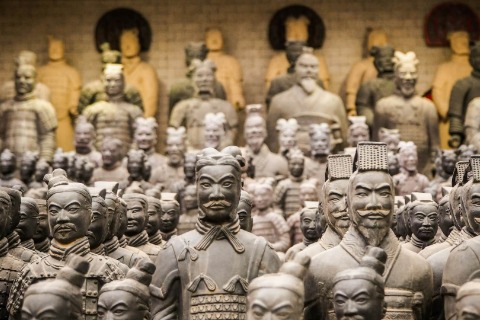Dufu Thatched House Museum
Dufu is honored in China as the “Sage of Poetry.”
Dufu Thatched House Museum (杜甫草堂) is the former residence of the Tang Dynasty poet Dufu (杜甫) during his time in Chengdu. Dufu is honored as the “Poet Sage” in China. His poetry is known for its deep themes, sincere emotions, and excellent artistic skills, making him a key figure in Chinese literature.
The museum is not only where Du Fu took refuge and wrote many poems during the An-Shi Rebellion but also an important site in Chinese literary history. It was first built in the second year of Emperor Suzong’s Qianyuan era (759 AD). Although the house was simple at first, it provided Du Fu with a stable environment for writing. During this time, he created many beloved poems.
Today, Dufu Thatched House Museum attracts a large number of visitors, with over a million people each year. It is a top choice for things to do in Chengdu.
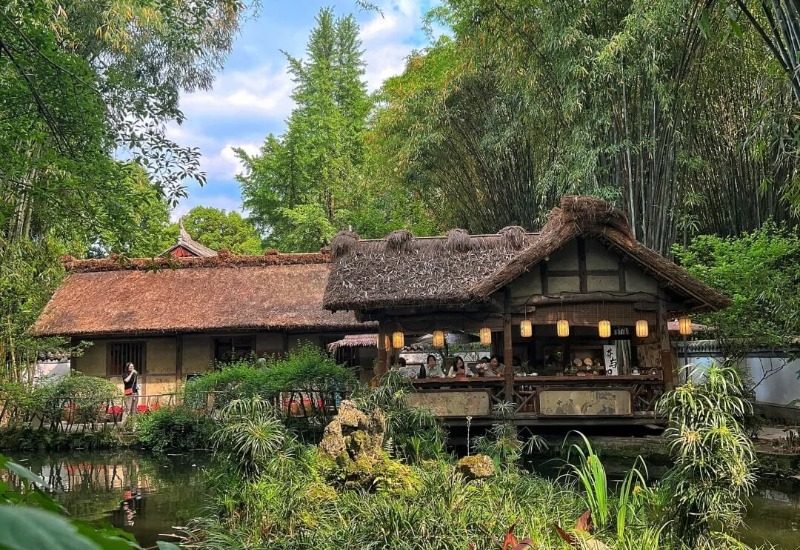
Table of Contents
Highlights the Du Fu Thatched Cottage Museum
Du Fu Thatched Cottage Main Gate (Chinese name: 杜甫草堂正门)
The main entrance of Dufu Thatched House Museum features a solemn white wall with blue tiles, creating a barrier that prevents a complete view of the internal gardens. This adds a sense of subtlety and depth to the cottage. The plaque above the entrance bears the two characters for “Thatched House,” written by the seventeenth son of Emperor Kangxi of the Qing Dynasty.
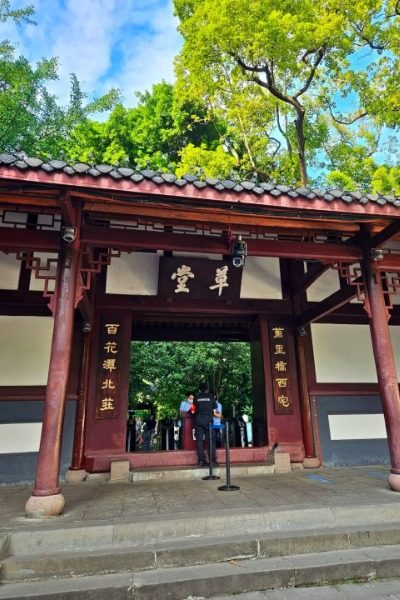
The Great Hall (大廨)
The Great Hall is an open-style building mainly used to commemorate the ancient officials’ workplaces. It was built in 1811 to express respect and admiration for Du Fu. The architectural style of the Great Hall is simple and dignified, without extravagant decorations. The overall color scheme is black and white, giving it a solemn and serious atmosphere.
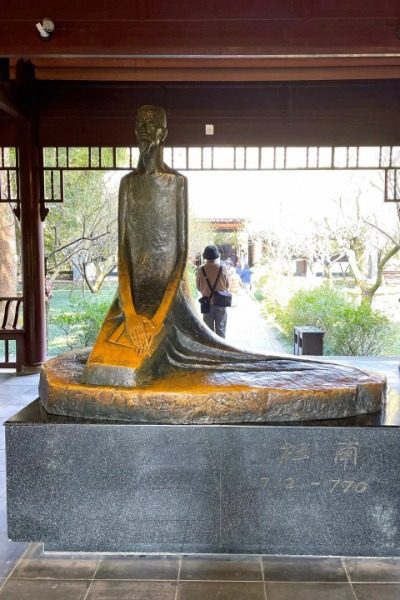
Poetry History Hall (诗史堂)
The Poetry History Hall is named after Du Fu’s poetry, which is often referred to as “poetry history.” His over 1,400 poems vividly depict the social life of the Tang Dynasty before and after the An-Shi Rebellion, reflecting the dynasty’s transition from prosperity to decline.
The hall not only showcases Du Fu’s life and works but also highlights the turbulence of Tang society and the condition of its people through his poetry. Du Fu’s poems are called “poetry history” because they not only document historical events but also deeply reveal social issues and the suffering of the people.
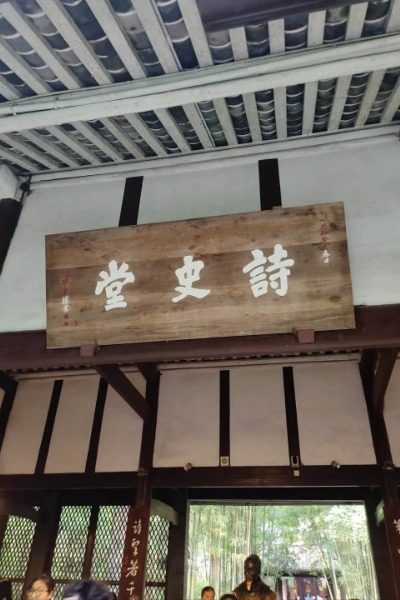
Gongbu Shrine (工部祠)
The Gongbu Shrine at Du Fu Thatched Cottage is dedicated to the great Tang Dynasty poet Du Fu. The plaque for the shrine was inscribed by the renowned modern Chinese writer Ye Shengtao. The architectural style of the Gongbu Shrine is simple, featuring blue tiles and unadorned surfaces, which gives it a sense of modesty and solemnity. Inside the shrine, there is a stone sculpture of Du Fu from the Ming Dynasty, which is the earliest remaining stone statue of him in the cottage.
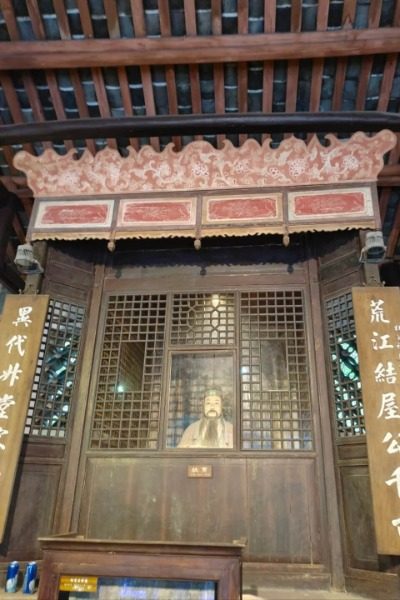
Thatched Cottage (茅屋故居)
Du Fu Thatched Cottage (杜甫 草堂) is the place where the Tang Dynasty poet Du Fu lived during his time in Chengdu. In 759 AD, to escape the An Lushan Rebellion, Du Fu brought his family to Chengdu. The following year, with the help of friends, he built this thatched cottage by the banks of the Huanhua Stream. Du Fu lived here for nearly four years, during which he created a significant body of work, with over 240 of his poems still surviving today.
In honor of Du Fu, later generations have continuously restored and expanded the Du Fu Thatched Cottage Chengdu, transforming it into a “hybrid” classical Chinese garden that incorporates elements of both a memorial hall and the style of the thatched cottage.
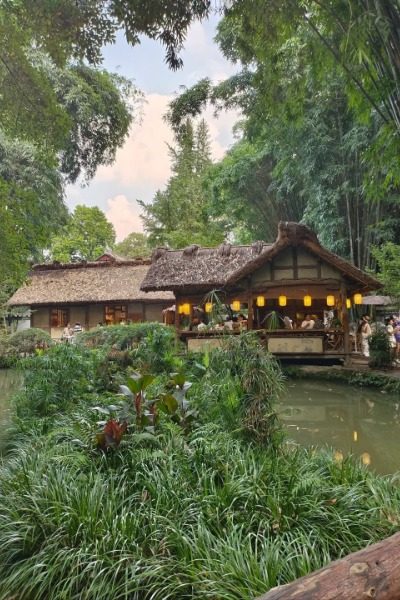
Plum Garden (梅园)
The Plum Garden is located in the northwest corner of Du Fu Thatched Cottage Museum. It features over 600 plum trees, including red and white varieties. In addition to the plums, the garden also has many local plants like crabapples and magnolias. There are lotus flowers in the water, creating a rich style typical of the Sichuan western forest garden.
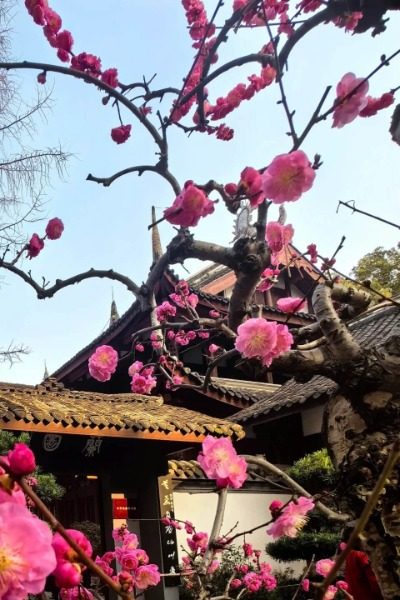
Flower Path (花径)
The Flower Path at Dufu Thatched House Museum is a charming red-walled alley lined with beautiful flowering plants, creating a picturesque and poetic atmosphere. At the entrance, there’s a plaque inscribed with “Flower Path,” written by renowned modern Chinese calligrapher Xiao Longyou. The scenery of the Flower Path has appeared in many promotional videos and films about Chengdu, attracting a large number of visitors.
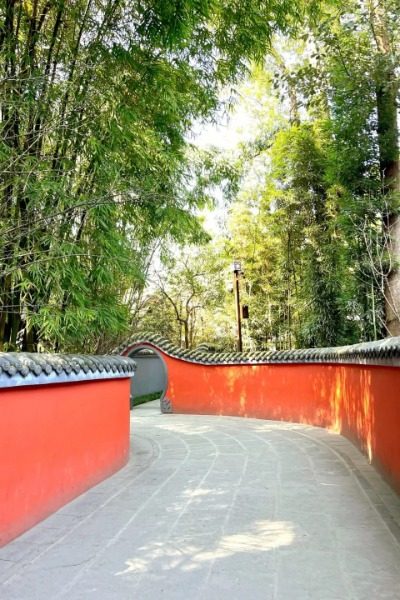
Daya Hall (大雅堂)
Daya Hall not only showcases the life and achievements of Du Fu but also vividly represents the development of Chinese classical poetry through sculptures and murals. The plaque on the door features the characters “Daya Hall,” written by the renowned Tang Dynasty calligrapher Yan Zhenqing. Inside, you’ll find the largest large-scale color-glazed mosaic lacquer mural in China, along with 12 sculptures of famous poets from various dynasties, illustrating both Du Fu’s life and the history of Chinese classical poetry.
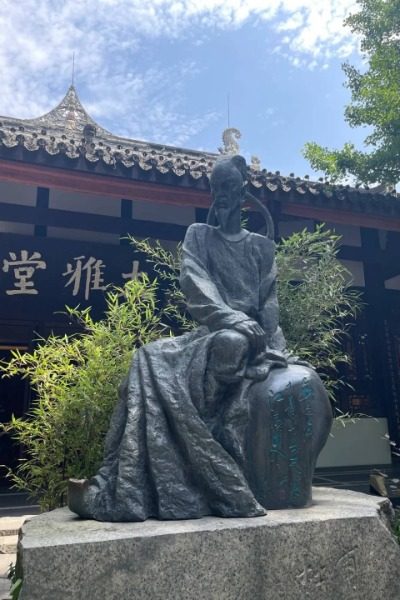
Orchid Garden (兰园)
The Orchid Garden not only showcases the natural beauty of orchids but also features an artistic corridor that highlights the praises and depictions of orchids by literati throughout Chinese history. Within the garden, towering ancient trees, an elegant hexagonal pavilion, a quaint fish pond, and winding, intricately designed rockeries and streams create a unique and harmonious landscape.
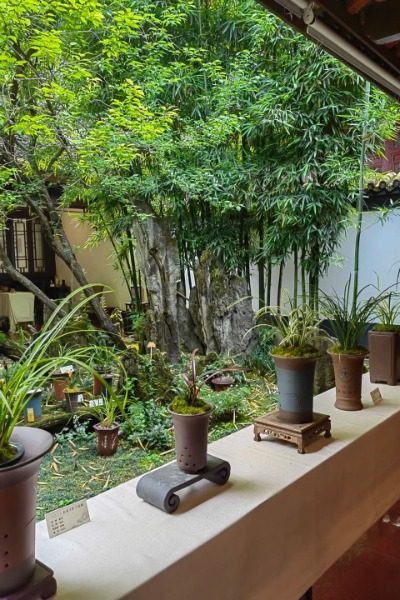
Q&A About the Dufu Thatched House Museum
1. Who is Dufu (杜甫)?
Dufu (杜甫) was a renowned realist poet from the Tang Dynasty (618–907 AD) in China. He is often revered as the “Sage of Poetry” by the Chinese people. Du Fu’s poetry is rich in content and reflects various aspects of Tang society, particularly the social changes before and after the An Lushan Rebellion.
From a young age, Du Fu was studious and well-versed in many subjects, with strong political aspirations. However, he was unable to pass the civil service exams during the reign of Emperor Xuanzong. After that, he traveled extensively. During nearly ten years in Chang’an, he lived in poverty, which deepened his understanding of social conditions.
2. What was the An Lushan Rebellion?
The An Lushan Rebellion was a civil war in the Tang Dynasty that occurred from 755 to 763, during the late reign of Emperor Xuanzong and the early reign of Emperor Daizong. It was sparked by the rebellion of An Lushan and Shi Siming against the Tang government, representing a struggle for control of the dynasty. This conflict marked a turning point from the Tang’s period of prosperity to its decline. The rebellion led to significant population losses and a sharp decline in national power. Although the Tang ultimately emerged victorious, local warlords began to gain power, and the dynasty never regained its former glory, becoming mediocre.
3. Is it worth visiting Dufu Thatched House Museum in Chengdu attractions?
Yes, Du Fu Thatched Cottage (杜甫 草堂) is a must-see in Chengdu attractions. The architecture is ancient and elegant, reflecting the characteristics of Sichuan’s traditional houses and showcasing unique beauty. The lovely garden landscape and rich poetic atmosphere make it an ideal place to learn about Tang Dynasty culture and appreciate classical garden architecture. The Du Fu Thatched Cottage Museum also regularly hosts various exhibitions of traditional Chinese culture and art, enriching the cultural experience for visitors.
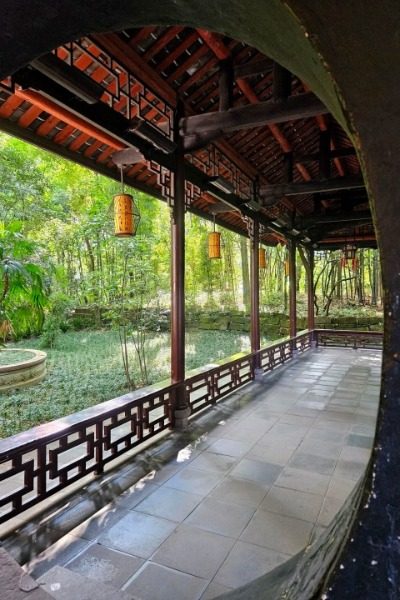
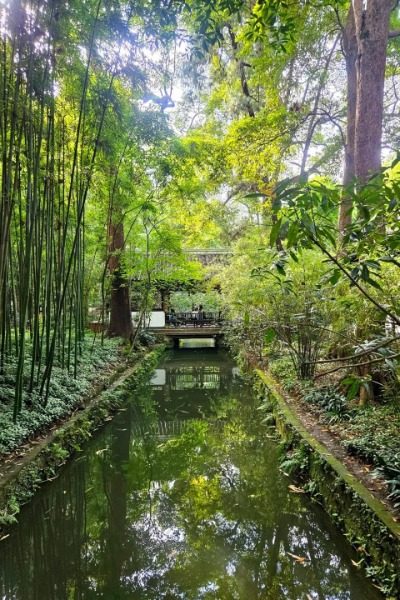
Hours and Fees
Hours
- 9:00 AM to 6:00 PM, with ticket sales ending at 5:00 PM and the latest entry time also at 5:00 PM. Open as usual on Mondays.
Admission
- 50 CNY (about 7 USD) per person.
How to Get to the Dufu Thatched House Museum
By Bus
- The bus routes to Du Fu Thatched Cottage include: 35, 58, 82, 151, 165, 170, 1024, and 1031.
By Subway
- Metro Line 2: Get off at the Traditional Chinese Medicine University Hospital Station (中医大省医院站) and transfer to bus 58 to reach Du Fu Thatched Cottage Station (杜甫草堂站).
- Metro Line 4: Get off at the Caotang North Road Station (草堂北路站), then walk to No. 37 Qinghua Road to reach the North Gate of Du Fu Thatched Cottage.


